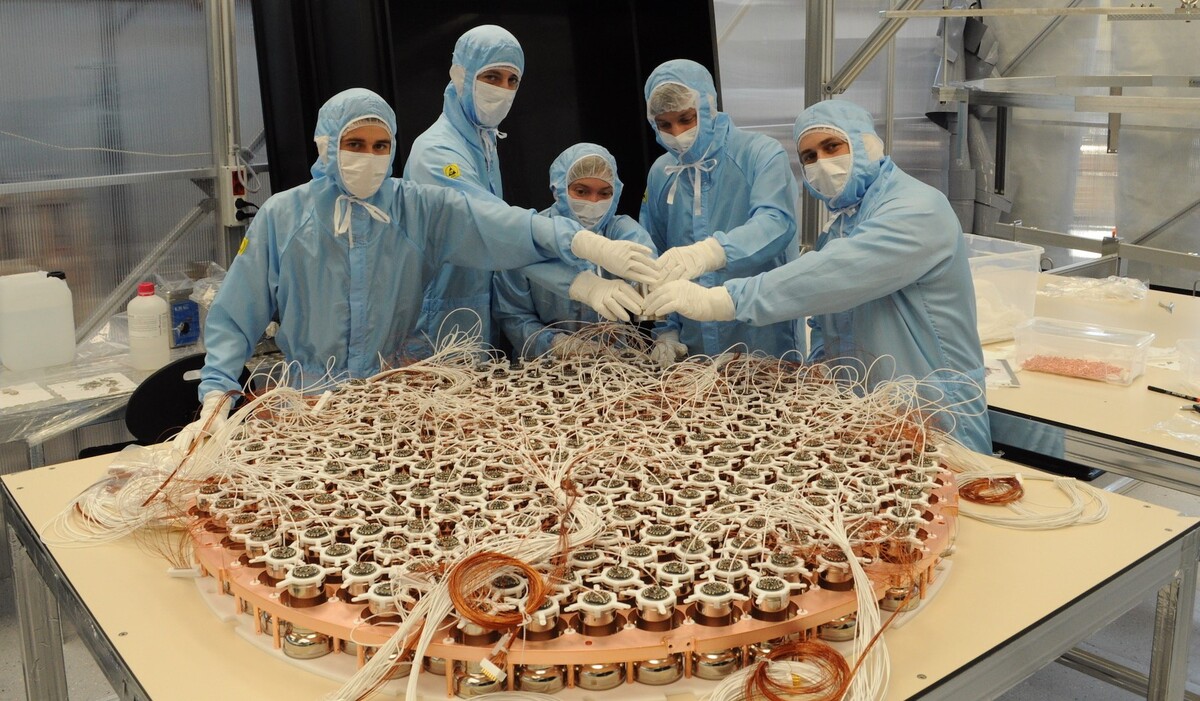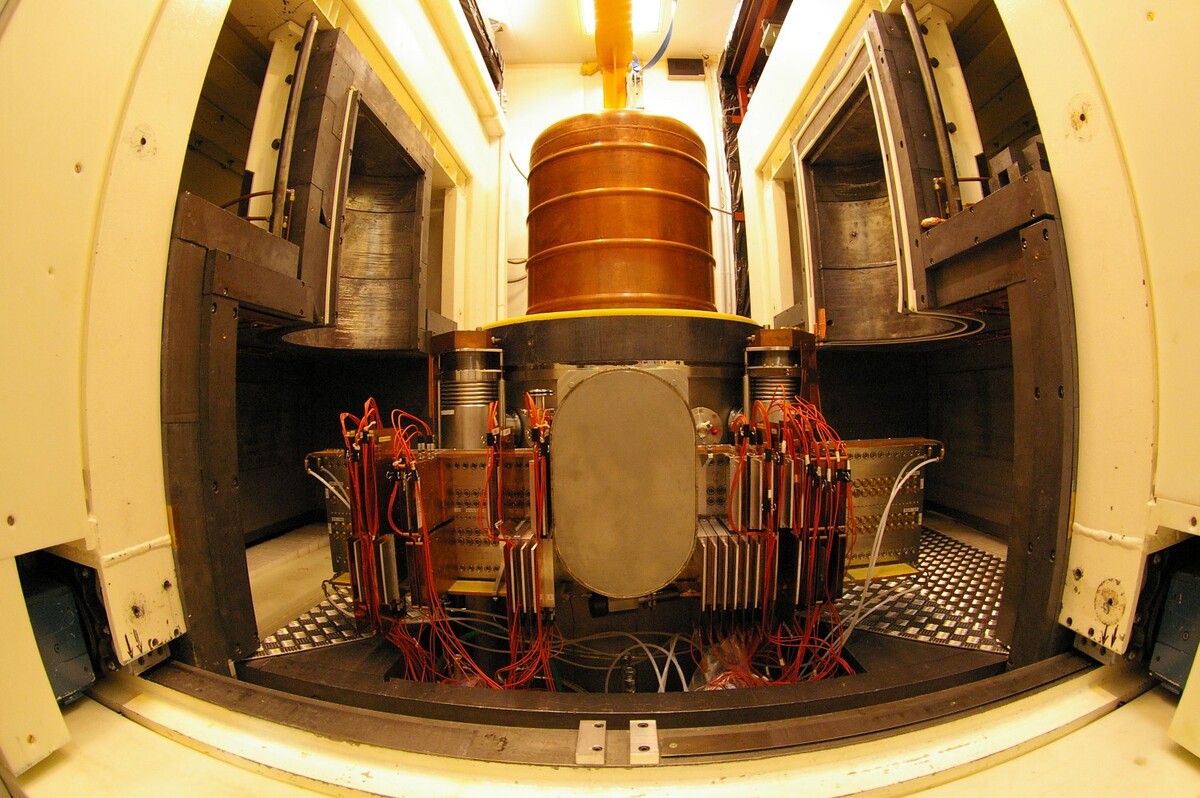Direct Search for Dark Matter
Project: XENON
The XENON dark matter experiment is installed underground at the Laboratory Nazionali del Gran Sasso of INFN, Italy. For XENON1T, more than 3 tons of liquid xenon target were operated as a dual phase (liquid/gas) time projection chamber to search for interactions of dark matter particles. An interaction in the target generates scintillation light which is recorded as a prompt signal by two arrays of photomultiplier tubes (PMTs) at the top and bottom of the chamber. In addition, each interaction liberates electrons, which are drifted by an electric field to the liquid-gas interface. There, a strong electric field extracts the electrons and generates proportional scintillation which is recorded by the same photomultiplier arrays as a delayed signal. The ratio of the two signals allows to discriminate electronic recoils, which are the dominant background, from nuclear recoils, which are expected from Dark Matter interactions. With this technique and the ultrapure liquid, XENON1T in 2018 was setting the world´s most sensitive limits on WIMP Dark Matter. The next stage in this endeavour is XENONnT with more than 8 tons of Xenon, aiming at increasing the sensitivity by another factor 20.
Project: DARWIN
DARWIN (DARk matter WImp search with liquid xenon) will be an experiment for the direct detection of dark matter using a multi-ton liquid xenon time projection chamber at its core.
Its primary goal will be to explore the experimentally accessible parameter space for Weakly Interacting Massive Particles (WIMPs) in a wide mass-range, until neutrino interactions with the target become an irreducible background.
The prompt scintillation light and the charge signals induced by particle interactions in the xenon will be observed by VUV sensitive, ultra-low background photosensors.
Besides its excellent sensitivity to WIMPs above a mass of 5 GeV/c2, such a detector with its large mass, low-energy threshold and ultra-low background level will also be sensitive to other rare interactions. It will search for solar axions, galactic axion-like particles and the neutrinoless double-beta decay of 136Xe, as well as measure the low-energy solar neutrino flux with <1% precision, observe coherent neutrino-nucleus interactions, and detect galactic supernovae.
Project: EDELWEISS
EDELWEISS (Expérience pour DEtecter Les Wimps En SIte Souterrain) is a direct Dark Matter search experiment looking for WIMPs (Weakly Interacting Massive Particles) which are expected to comprise the non-baryonic cold Dark Matter. The detection of these particles on earth is possible by measuring their elastic scattering off a barionic matter in a suitable detector. Part of the WIMP kinetic energy can be deposited in the detector as recoil energy. The expected interaction rate is very small as well as the energy signal. In order to be able to measure these rare and small signals, EDELWEISS uses an array of cryogenic detectors (bolometers) which run at about 20mK and each consists of a single, ultra pure Germanium crystal of 800g. To minimize the background radiation, the whole experiment is built in a underground laboratory (Laboratoire Souterrain de Modane (LSM), France). The EDELWEISS collaboration is a collaboration of 11 institutes from 4 countries.
Further Information
For more information: Dark Matter Group.




